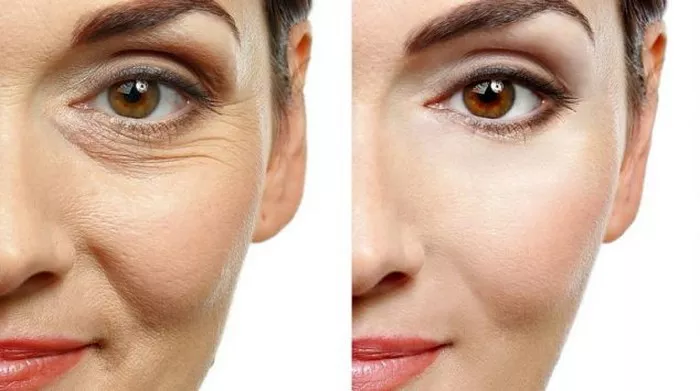Wrinkles are a natural part of the aging process, but they can also be caused by a number of other factors, including sun exposure, smoking, and repetitive facial expressions. While wrinkles are often associated with the face, they can also occur on other parts of the body, including the top of the head. In this article, we will explore what causes wrinkles on top of the head, including the role of genetics, sun exposure, and aging.
The Role of Genetics:
Genetics can play a significant role in the development of wrinkles on top of the head. Some people are simply predisposed to developing wrinkles earlier in life or more prominently than others. This can be due to a variety of factors, including skin type, skin thickness, and the amount of collagen and elastin in the skin.
Sun Exposure:
Sun exposure is one of the most common causes of wrinkles on top of the head. The sun’s UV rays can damage the skin’s collagen and elastin fibers, leading to the development of wrinkles and other signs of aging. This is why it is important to protect your skin from the sun by wearing a hat or using a sunscreen with a high SPF.
Aging:
As we age, our skin naturally loses collagen and elastin, which can cause wrinkles to form on top of the head. This is because the skin becomes thinner and less elastic, making it more susceptible to the effects of gravity. Additionally, the skin’s oil glands become less active, leading to dryness and increased vulnerability to environmental factors.
Repetitive Facial Expressions:
Repetitive facial expressions can also contribute to the development of wrinkles on top of the head. This is because the repeated contraction of facial muscles can cause the skin to crease and fold, leading to the formation of wrinkles over time. This is why it is important to be aware of your facial expressions and to try to avoid making the same ones repeatedly.
Smoking:
Smoking is another common cause of wrinkles on top of the head. This is because smoking can damage the skin’s collagen and elastin fibers, leading to the development of wrinkles and other signs of aging. Additionally, smoking can cause the skin to become dry and dehydrated, making it more susceptible to the effects of environmental factors.
Prevention and Treatment:
While wrinkles on top of the head are a natural part of the aging process, there are several steps you can take to prevent or minimize their appearance. These include:
Protecting your skin from the sun by wearing a hat or using a sunscreen with a high SPF.
Staying hydrated by drinking plenty of water and using a moisturizer to keep your skin hydrated.
Avoiding smoking and other harmful environmental factors that can damage the skin.
Eating a healthy diet rich in antioxidants and other nutrients that can help support skin health.
Using anti-aging products that contain retinol, vitamin C, and other ingredients that can help boost collagen and elastin production.
Conclusion:
Wrinkles on top of the head are a natural part of the aging process, but they can also be caused by a number of other factors, including sun exposure, smoking, and repetitive facial expressions. While it is not possible to completely prevent wrinkles from forming, there are several steps you can take to minimize their appearance and keep your skin looking healthy and youthful. By protecting your skin from the sun, staying hydrated, avoiding harmful environmental factors, and using anti-aging products, you can help keep your skin looking its best for years to come.
FAQs
1. How do you get rid of wrinkles on your scalp?
Wrinkles on the scalp, also known as cutis verticis gyrata (CVG), can be challenging to treat. However, maintaining a healthy scalp care routine can help improve the appearance of wrinkles and promote overall scalp health. This may include gentle exfoliation to remove dead skin cells, moisturizing with hydrating scalp treatments or oils, protecting the scalp from sun damage with sunscreen or hats, and staying hydrated to support skin elasticity. In severe cases, cosmetic procedures such as scalp microneedling or laser therapy may be considered to reduce the appearance of wrinkles and improve skin texture.
2. What causes wrinkled scalp?
Wrinkled scalp, or cutis verticis gyrata (CVG), is a rare condition characterized by deep grooves or folds in the skin of the scalp, resembling the surface of the brain. CVG can be primary, with no underlying cause, or secondary, resulting from conditions such as inflammation, trauma, or underlying medical conditions. Primary CVG is believed to be caused by abnormal growth and folding of the scalp skin, while secondary CVG may be associated with conditions such as eczema, psoriasis, or neurological disorders.
3. Why do I have lines on the top of my head?
Lines or wrinkles on the top of the head, also known as cutis verticis gyrata (CVG), can result from a variety of factors. Primary CVG, which occurs without an underlying cause, may be due to genetic predisposition or abnormal skin growth and folding. Secondary CVG, on the other hand, may be associated with conditions such as scalp inflammation, trauma, or underlying medical conditions like eczema or psoriasis. Additionally, lifestyle factors such as sun exposure, dehydration, and smoking can contribute to skin aging and the development of wrinkles on the scalp.
4. Does cutis verticis get worse?
The progression of cutis verticis gyrata (CVG) can vary depending on factors such as the underlying cause, individual health, and management strategies. In some cases, CVG may remain stable or progress slowly over time, while in others, it may worsen due to factors such as inflammation, trauma, or underlying medical conditions. Proper diagnosis and management by a dermatologist or healthcare professional are essential for monitoring the condition and implementing appropriate treatment strategies to help manage symptoms and minimize progression.


